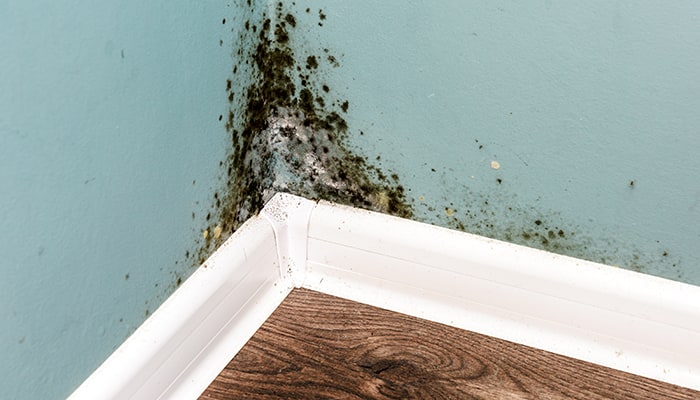11 Signs of Mold In Your Home

Mold can be present in your home in various forms. It’s not always obvious to immediately spot, so knowing the telltale signs that it's there can help you discover it sooner — and remove it sooner. Here are 11 signals that tell you mold is growing in your home.
1. Musty Odor
Do you smell a musty odor when walking into the basement or the first floor of the home? Excessive moisture and lack of ventilation are the two major causes of mold growth in homes. We recommend installing a dehumidifier to remove excess moisture from the basement, and also making sure there is plenty of ventilation by installing fans throughout the home.
2. Black Staining On Block Walls
Black staining on your block walls is a sign of mold, which means that there is a water problem in the basement. This could be caused by water in the block or dampness in the basement. If you have black stains on your block walls, you will need to have them removed with a pressure washer and drywall patching compound.
3. White Mold On Basement Joint Floor
A white powder on the floor joist or subfloor of your basement is a sign of mold. The white dust is a mixture of spores and dead mold. This type of mold is caused by lack of ventilation and excessive moisture in the basement.
4. Discoloration On Sheetrock Or Baseboard
When you see discoloration or watermarks on sheetrock this could have been caused by a water leak or flooding in the basement. The real problem lies behind the sheetrock. You will need to remove it and investigate the source of the water so you can prevent it from continuing. You will also need to replace the damaged sheetrock.
5. Black Staining On Floor Joist/Subfloor
Seeing black staining means there is possible mold caused by a leak on the first floor. Make sure you understand what caused the leak and how much damage it caused.
6. Efflorescence On Block Wall
If you see white sections or lines on your block walls in the basement, there is a moisture intrusion in the blocks. This can lead to mold growth and odor in the basement. You might need a French drain and sump pump to prevent further moisture damage.
7. White Mold On Furniture Or Doors
The white, fuzzy mold that appears on furniture, doors and the walls of your basement is the result of excessive moisture in the room. Not only does it damage your furniture, but it also can spread easily and create a strong-lasting musty odor.
8. Spots On Bathroom Walls
Spots on your bathroom walls are caused by a lack of ventilation in the bathrooms. All bathrooms should have a good fan that is venting outside — not into the attic. This is an easy fix and relatively inexpensive.
9. Staining On Attic Sheathing And Floor Joist
Proper airflow in the attic can help increase the longevity of your roof, save you on cooling bills during hot weather, and prevent dangerous mold from developing. One of the most overlooked items when it comes to proper ventilation is your attic sheathing or floor joists. Staining on attic sheathing or floor joist indicates a lack of ventilation, which leads to high moisture levels and can have serious consequences if not addressed.
10. Staining In All Corners Of Block Walls In The Basement
Staining in the corners of your basement walls is caused by poor drainage outside your house. The gutter downspouts need to empty away from the foundation. If not, this creates moisture intrusion in the block and mold growth.
11. Working Sump Pump
A working sump pump is important to keep water out of the basement. The water level can rise and sit under your foundation, which can lead to moisture build up on the floor. This creates an environment for mold, rust, and other issues that can damage or destroy your home.
Request a Free Quote
Worried about the air quality of your home from mold or mildew? Please fill out this form and we will contact you about scheduling a free appointment to test the air quality of your home and check for mold and mildew.